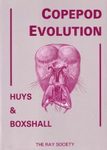World / Checklist Identification Key Monograph
By: Étienne Iorio(Author), Karin Voigtländer(Author)
98 pages, 100 colour & b/w photos, tables
![The Lithobiomorpha of the Continental Iberian Peninsula (Chilopoda) The Lithobiomorpha of the Continental Iberian Peninsula (Chilopoda)]()
Click to have a closer look
About this book
Customer reviews
Related titles
About this book
Language: English with bilingual abstract in English and French
This paper includes much new data on the distribution of 37 taxa of the order Lithobiomorpha (Chilopoda) of the continental part of Spain, following the examination of almost 1600 specimens from this area. A new troglobitic species found in some caves of the Bizkaia province is described: Lithobius (Lithobius) prietoi sp. nov. This new species is close to L. (L.) validus Meinert, 1872 but has several distinguishing features in comparison with this latter, particularly the following: a smaller number of ocelli, these latter being also less well shaped and not pigmented (or almost so); a larger Tömösváry’s organ; a poorer plectrotaxy, particularly for the spines VaF, VpF, VaT, DaP and DpT, the lack of the spine DaP on the 15th legs of L. (L.) prietoi sp. nov. being already distinctive compared with the young immature of L. (L.) validus; and longer articles in the 15th legs. Several tens of specimens of L. (L.) validus from France and Italy from the MNHN collection have been examined by the first author as well as our personal ones, to support the comparison between the two species. L. (L.) typhlus Latzel, 1886 is added as new to the Iberian fauna having been found in the Spanish Pyrenees, in a cave near Toloríu. A female tentatively assigned to L. (L.) deserti Verhoeff, 1908 has been found in Soria Province. Several uncommon species are recorded for the first time in some Spanish provinces, as in particular: L. (L.) drescoi Demange, 1958, added in Bizkaia and Guipuzkoa; L. (L.) macilentus L. Koch, 1862 added in Alava, Guipuzkoa and País Vasco; L. (Monotarsobius) blascoi Eason, 1991 added in Navarra, Soria and Teruel. An immature male from a cave in Bizkaia possibly belongs to the rare and troglobitic L. (Lithobius) pedisulcus Serra, 1977; however, it could be another species. Our identifications have led us to thoroughly study the morphology of the 37 taxa; we thus are able to complement existing descriptions for several poorly known species. For example, some specimens of L. (L.) guadarramus Matic, 1968 from Alava, Galicia and Guadalajara provinces have been identified and this species is clearly valid: the females are particularly distinctive when compared with the close L. (L.) schubarti Demange, 1959, because of the absence of dorsomedial setae on the gonopods of the first versus the presence of 6 to 10 dorsomedial setae on gonopods of the second. Our numerous specimens of L. (L.) romanus inopinatus Matic & Darabantu, 1968 allow us conclude that it very probably belongs to a different species from L. (L.) romanus Meinert, 1872 and L. (L.) piceus L. Koch, 1862. Two new synonyms are proposed (syn. nov.): L. (L.) tricuspis multidens Demange, 1958 is a junior synonym of L. (L.) derouetae Demange, 1958; L. (L.) derouetae sexusbispiniger Demange & Serra, 1978 is synonymous with the typical L. (L.) derouetae Demange, 1958. The authors present a revised checklist of the continental Iberian Lithobiomorpha: 60 lithobiomorph taxa are listed for this area of which 41.7% are endemic to it; the total of endemics and subendemics being 61.7%. It confers high responsibilities for conservation of this fauna and territory. An identification key to facilitate the identification of all species is given since existing keys are old and very incomplete. Illustrations are given to support observation of the criteria.
Customer Reviews
World / Checklist Identification Key Monograph
By: Étienne Iorio(Author), Karin Voigtländer(Author)
98 pages, 100 colour & b/w photos, tables











![Catalogue Commenté des Crustacés Isopodes Terrestres de France Métropolitaine (Crustacea, Isopoda, Oniscidea) [Annotated Catalogue of Terrestrial Isopods of Metropolitan France]]](http://mediacdn.nhbs.com/jackets/jackets_resizer_medium/22/222574.jpg?height=150&width=106)
![Les Plantes Aquatiques et des Milieux Marécageux de Gironde [Aquatic Plants and Marshlands of Gironde]](http://mediacdn.nhbs.com/jackets/jackets_resizer_medium/20/207386.jpg?height=150&width=99)
![Les Opilions de la Moitié Nord de la France (Arachnida: Opiliones) [The Opiliones of Northern France (Arachnida: Opiliones)]](http://mediacdn.nhbs.com/jackets/jackets_resizer_medium/23/231733.jpg?height=150&width=104)













